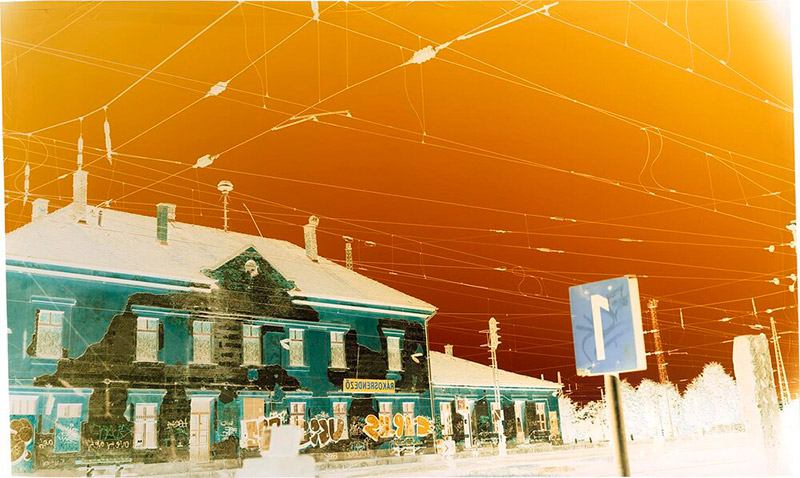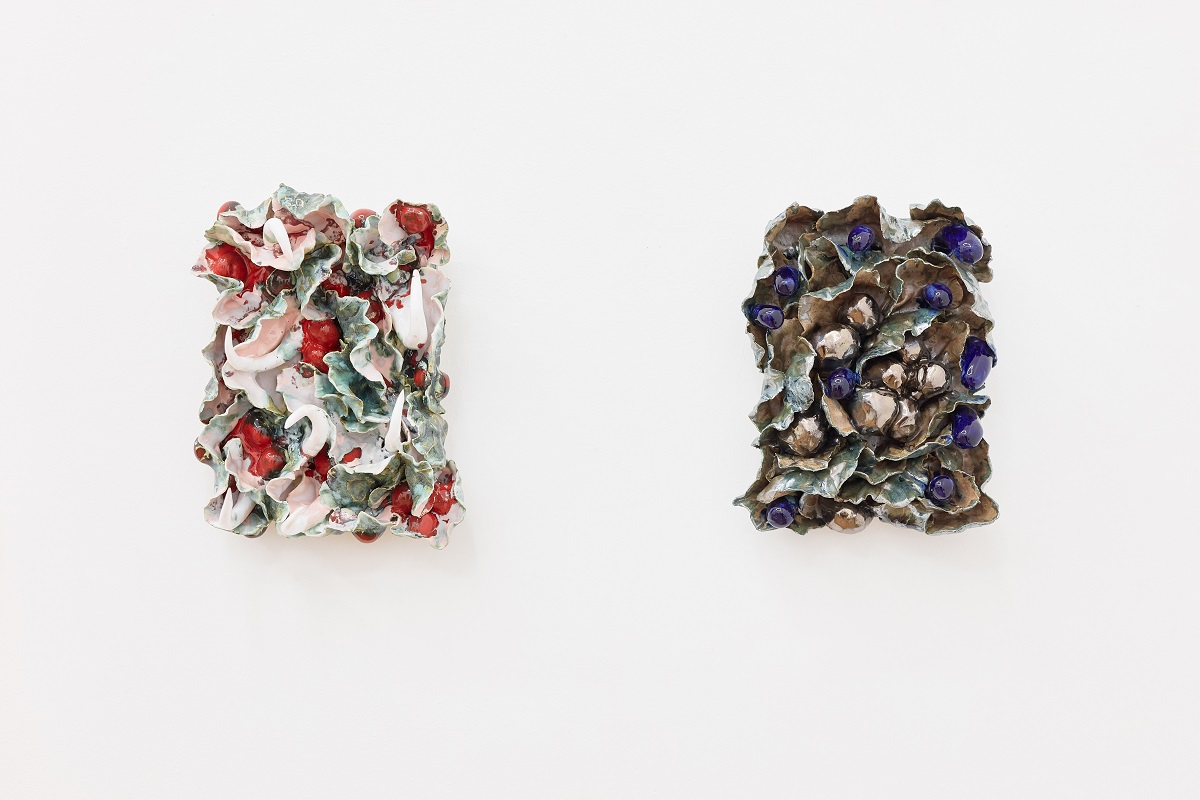Dust of Angels
John Chiara's artist residency in Budapest Art Factory
Takács Lívia
The Budapest Art Factory welcomed Californian photographer John Chiara for the second time since 2017 for a two-months artist residency. In the beginning of the summer 2019 Budapest Art Factory presented his residency-end solo exhibition titled ‘Dust of Angels’: a series of the street scenes and landscape photographs in portrait format bustling with color.
ALL EARS?
Botond Keresztesi: Van Gogh’s Airbnb
Patrick Tayler
Painters, like Botond Keresztesi, bring back distant visual triggers, for those who still have some unfinished mission in the virtual sphere: a save slot left unopened for too long, an uncaught apple, a motorbike levitating since the last millennium. Instead of recreating previous experiences – and the resulting emotional-cognitive reactions – on a technically more advanced platform, Keresztesi deploys the ancient practice of painting to recontextualise digital and non-digital fragments.
Guarding Beauty
Ádám Dallos’s one-man show Mercurius with Crying Dragon
Patrick Nicholas Tayler
Ádám Dallos exhibited three large-scale oil paintings – Boy with Crying Dragon (2019), Mercurius with Crying Dragon (2019), Bleeding Eye Bull Begins to Cry (2019) – that each show an individual male nude in the company of a monster. The mythical beasts complete the human figures as attributes of an awakening power, as projected spirits of testosterone, or in other words, a guarding presence hovering above the exposed bodies.
Purple Prose
Orsolya Lia Vető's exhibition
Tayler Patrick Nicholas
Zooming in on flowers and fruit in the series Plantscape, Orsolya Lia Vető is not squeamish concerning the alluring, the decorative in her painting practice. The communicative urge that drives the aesthetics of kitsch is condensed into individual signs, that cease to denote separate morphological units and instead hook-up in a hybrid inflorescence, merging in a despecific corporality.
Whitecube Wunderkammer
Sekrestye – Unixpected
Tayler Patrick Nicholas
Sekrestye is a Budapest-based, loosely defined group of artists whose collective movements are centred around a series of exhibitions and events arranged predominantly in private places, introducing a fresh, off-track attitude to the art scene of the Hungarian capital. Surfacing gradually from the depths of social media and appearing sporadically in different venues, the group’s fifth exhibition was installed in the two visually transformed exhibition halls of Art9 Gallery and presented a visual jam session, that contextualised personal voices within a common vision.
BUMm
an introductory group exhibition of the resident artists of Atelier Budakalász
Tayler Patrick Nicholas
There are places in suburban Budapest where artists tinker around in weird hours, working on pieces that can be described with a collection of contradictory terms: edgy, ephemeral, toy-like, pseudo-scientific, Blade Runneresque, sacred, sacrilegious, modified, recontextualised, assisted, remixed, etc., deploying tactics that unsettle the norms of art. They sometimes utilise the tools of the film industry, of fine mechanics or of any other area connected to the construction of illusions and palpable realities.
Ritual Trail to Self
Patrícia Jagicza and Patrícia Kaliczka’s exhibition
Tayler Patrick Nicholas
The self-portrait reveals traces of an impossible distance – an out-of-body experience, that proposes selfhood through a kind of informed schizophrenia. If “presence is impossible except as co-presence”, who is this other I share myself with? Is the dichotomy of artist and model relevant in this case? Is the mirror or camera – the technical facade – the real eyewitness to this emergence of the self?
RIGHT CLICK – FREE TRANSFORM
Róbert Batykó’s Solo Exhibition “Red Eye”
Tayler Patrick Nicholas
There is a pre-programmed quality in Batykó’s work, it operates on the border of the visual culture of digital technology, the logic of picture editing software and process art. Instead of a file’s invisible transformation, Batykó’s work deploys an organic substance and not a binary system. The image is fixed onto the hard-drive of easel painting: hitting ctrl+alt+z doesn’t work here, neither is there space for any further modification. The interface is frozen.
The view from an armchair: on the brink of a season that never existed
József Pinczés’s Solo Exhibition at Villa Lívia
Tayler Patrick Nicholas
Due to the personal iconography of Pinczés (that he has been consistent with in the years), there is always a conversation between the discernible temporal layers. A giraffe, a balloon, a magpie can appear as a symbol of the artist’s presence: connecting the oeuvre not only on stylistic grounds but also symbolically. In the painting Master and Student (2018), Pinczés depicts a robot mouse – the exact object that served as the starting point for Zsigmond Károlyi’s painterly investigations in 2005 – in the company of a slightly asymmetrical, playful toy monkey.
2016. 08. 11. –
Zita Dávid’s solo exhibition
Patrick Nicholas Tayler
Zita Dávid’s paintings provide poetic images that give the viewer an inter-subjective experience. The barriers of the self are questioned as the observer is driven to look through the artist’s eyes, becoming personally involved.
The painter of the trees
Hans Mattis Teutsch
Nicolas Eber
The essential subject of my present writing are the paintings and linocuts of Hans Mattis Teutsch and his until present not yet duly recognised and interpreted tree-representations. With regard to that the reader of these lines could soon raise the question, why am I going in that case here below to stay with the general discussion of anthropomorphism and especially with the representation of the animal word in humanised form in the literature and art-painting?
UNSEEN CREATURES
Mira Dalma Makai’s Solo Exhibition
Tayler Patrick Nicholas
There is a type of beauty at play here similar to the aesthetics of scientific photographs, which alienate and disembody the observed object. This is the “sea change” of the close-up: when what is in front of us turns into “something rich and strange” just by the sheer fact of our proximity. The dichotomy of strangeness and familiarity is also at stake in Makai’s personal iconography, letting every element become identified as something similar to claws, leaves, shells or gems, but never precisely named and thus remaining ambivalent: somewhere between the unknown and the materialised.










